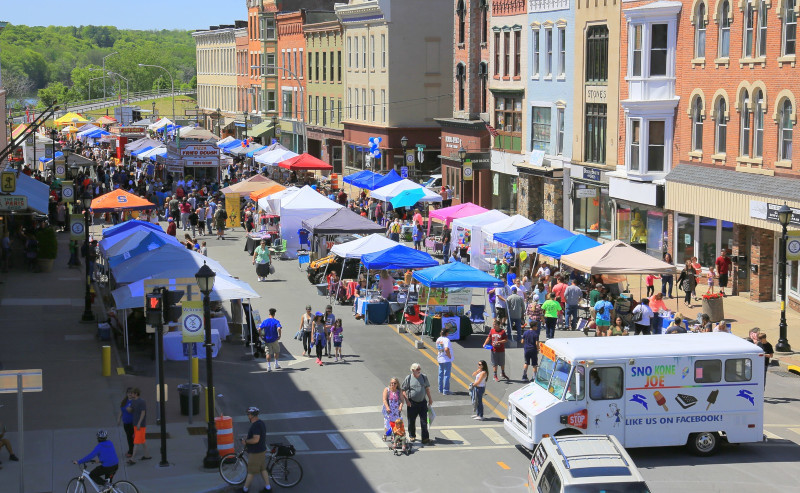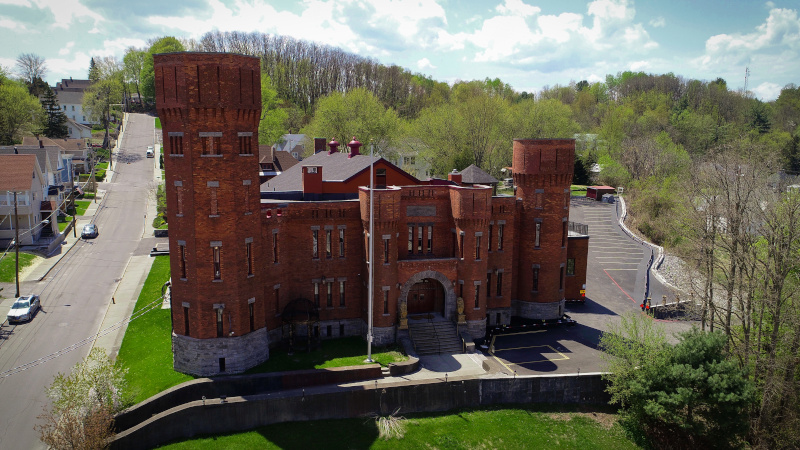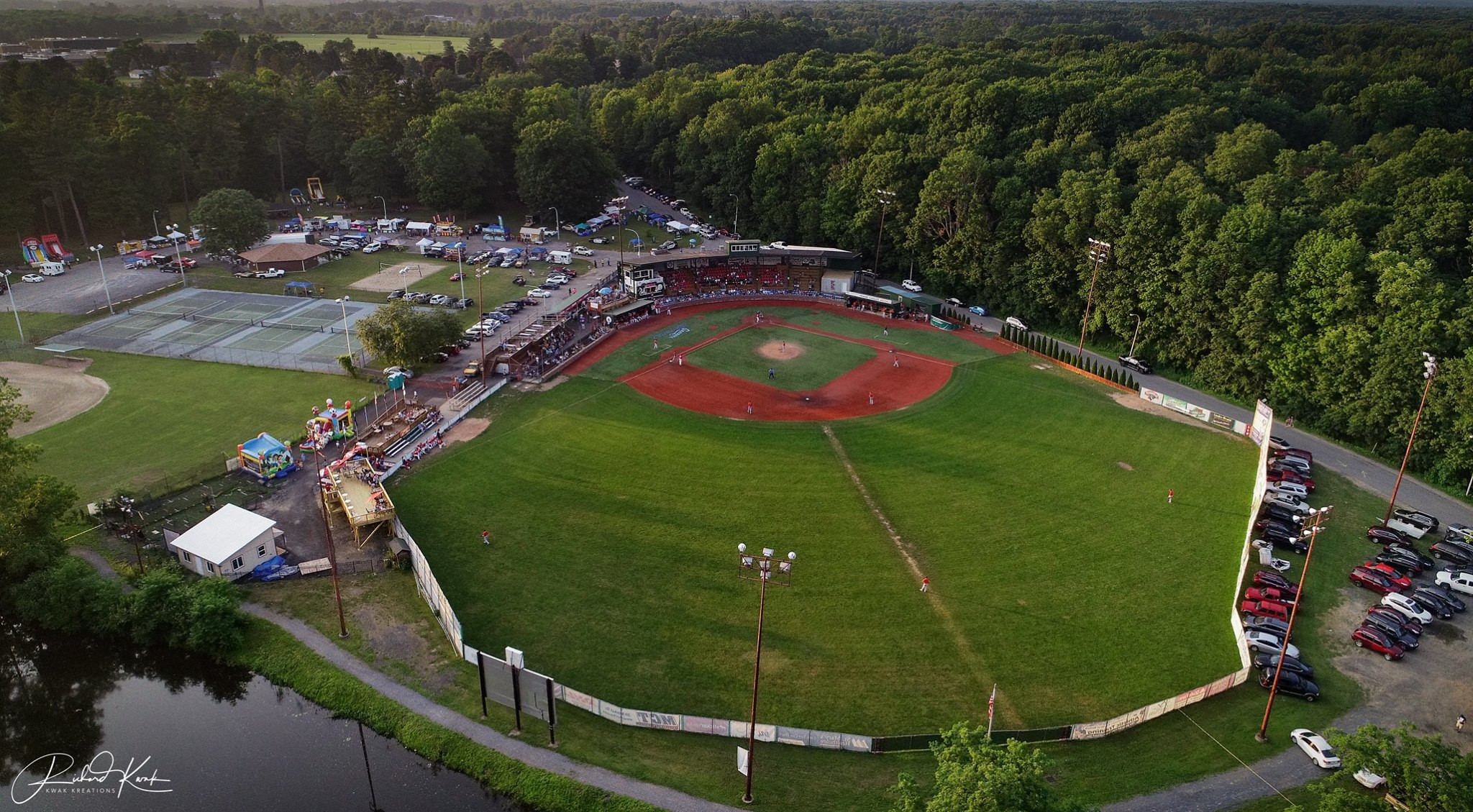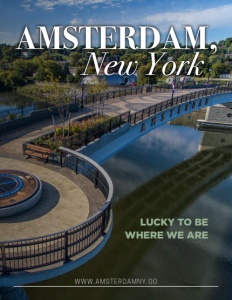Amsterdam, New York
Lucky to be where we are
Business View Magazine interviews representatives from Amsterdam, New York, as part of our focus on best practices of American towns and cities.
Amsterdam is a city in Montgomery County, New York, named, not surprisingly, for Amsterdam in the Netherlands. The city of 6.3 square miles developed on both sides of the Mohawk River, with the majority located on the north bank. As of 2017 estimates, the city had a population of roughly 18,000, having steadily declined each decade from a peak 1930 population of 34,817. Actor Kirk Douglas was born in Amsterdam in 1916 and has a park in the city named for him.
The first Europeans to settle here were Dutch immigrants in about 1710. They called the community Veeders Mills and Veedersburgh after Albert Veeder, an early mill owner. After the American Revolutionary War, many settlers came from New England. Anglo-American residents changed the name to Amsterdam in 1803. It was incorporated as a village in 1830 from a section of the Town of Amsterdam. New charters increased the size of the village and, in 1885, Amsterdam became a city.

The completion of the Erie Canal in 1825 was an economic boon to the city, which became an important manufacturing center, known for its textiles, pearl buttons, linseed oil, brooms, and iron goods, but mostly carpets. Two of the world’s most recognized carpet brand names – Sanford-Bigelow and Mohawk – are Amsterdam born and bred. Through the late 19th and early 20th centuries, the city was a destination for immigrants from southern and eastern Europe, who initially worked in the factories. But then the mills began to close, moving south and overseas to find cheaper labor and lower taxes. The children of the children of immigrants go off to college and do not return. Many of their parents depart also, and the population and tax base decline. Literally, the carpet is pulled out from under the city’s feet.
In an attempt to draw people and business back to Amsterdam, the city and state began a program of urban renewal and arterial roadway construction, destroying much of the original fabric of downtown, though a few historic buildings and sites remain. The city’s 2003 Comprehensive Plan described a program to recognize what remains constant and what has changed and to capitalize on the city’s assets, revitalize its urban center, and attract new visitors, businesses, and residents. Many of its recommendations are now being acted on. Unfortunately, Amsterdam experienced serious flooding damage to properties at the river’s edge in the aftermath of Hurricane Irene in 2011.
Recently, Business View Magazine spoke with Amsterdam’s Community & Economic Development Director, Amanda Bearcroft, and Mayor Michael Villa, about Amsterdam’s challenges and projects.
“Amsterdam has come a long way in three and a half years,” notes Mayor Villa. “We’ve had great assistance from the state and we have some very exciting projects to look forward to. Currently, we’re waiting for state approval on the Chalmers site, a 300-seat banquet facility, as well as 120 working-class housing units. We are a 10-million-dollar state DRI (Downtown Revitalization Initiative) award winner for the downtown core and south-side waterfront along the Mohawk. I think that exemplifies the direction the city is going in. The state recognizes the improvements we’ve made and are making to our waterways and waterfront. Our Tourism, Marketing & Recreation Department has been encouraging people to go to events that have been extremely well attended, encompassing not only the city but the surrounding communities. And we have some opportunity zones to take advantage of, as well as recently-nominated north and east BOAs (Brownfield Opportunity Areas).”

Amsterdam Castle
It’s not an unusual story for many areas in upstate New York – a waterfront-based, industrial community majoring in manufacturing, started losing population after losing much of its manufacturing. “I think what sets us apart though is our location, central between the Adirondacks and New York City, and along the beautiful Mohawk River and Erie Canal,” suggests Bearcroft. “We have a lot of opportunities here that we’re on the tipping point of utilizing through all these initiatives we’ve been lucky enough to receive, one of them being the Downtown Revitalization Initiative. We won round three of the $10 million state grant and we spent the last six months working with the state and our consultant, perfecting our plan of what projects we would move forward on. What we came up with were about 20 projects at $15.2 million in state funding, roughly $30 to $40 million in total project costs. Right now it’s being reviewed by the state. We’re hoping they will tell us soon what projects are moving forward, as we have roughly a two-year timeline to complete those projects from start to finish. Some are brand new construction, some are rehab, some are design guidelines, but all with the end goal of creating a catalyst effect in our downtown core. That’s going to create a whole wave of public and private partnership investment in the next five years, so that we triple our investments in the next five years and it spreads outside the downtown core that we identified through this process.
“We’ve had a lot of people who have been sitting on property saying ‘I think this is the time to invest; we’re going to get in on the ground floor, and we’re really going to start to work with the city,’ and we’ve had a lot of residents come forward, not just saying ‘we’re going to develop,’ but ‘what does the city want us to develop,’ which is wonderful. So we’re already creating those partnerships with people that already exist here to create a community that’s going to work for everyone.”
Amsterdam was also awarded $6.9 million in federal transportation enhancement funding. Between the city of Amsterdam and the DOT, there will be focused areas throughout the downtown core looking at transportation enhancement, circulation enhancement, and areas the state knows are issues within the corridors. Bearcroft remarks, “That’s huge for a state agency to come to a municipality and say, ‘We know there are issues, and we’re going to help you fix them.’ Just having our state agencies back us up is huge. We’re beginning to see the momentum and the upward tick here in the city. I’m really hopeful that, in the next two years, this municipality is going to look completely different than it does right now.”
Though Amsterdam’s population has been decreasing for decades, Bearcroft hopes that all the new investments and housing projects that they hope will come online, putting people into the city again, will change that, to be reflected in the 2020 census. Among the largest employers in the city are Saint Mary’s Hospital, Liberty Enterprises (an ARC), and Target Distribution Center (around 900 employees); Hill & Markes and Beech-Nut Nutrition Company are in the same distribution corridor. Dollar General is coming online with a distribution center and 475 jobs.
Mayor Villa notes, “On the plus side, our unemployment rate has dropped significantly. In 2011, we might have been at around 10 percent, but, right now, it’s just at 5 percent unemployment. We have many transportation facilities. We have a Target Distribution Center. Very large employers are here. Now, we have to find a place for these people to live, work, and play. That’s the goal around the DRI, to make this 10-minute walk from where people live to where they could eat, shop, and spend dollars within the city. Like Amanda said, I think you’ll see a huge difference in the next two to five years.”
The city completely revamped zoning in 2017, prior to submitting the winning DRI application. Says Bearcroft, “To have a walkable downtown, you need to have zoning that allows for mixed-use development and moves away from the normal ‘Euclidean’ zoning, especially in the identified downtown core. Relax zoning requirements to allow for multiple mixed uses and cut down on the parking standards – in any successful city, parking is a problem, so you know you’ve made it when parking is an issue. To cut down on that pavement is something the city wanted as well, so we made sure that was up-to-date in the code. Going back to mixed-use, we were looking at a range of housing options, so, if there’s commercial on the first floor, allow apartments on the second floor.”

Amsterdam Castle
“It was kind of jarring when our consultant mapped our downtown core and something like 75 percent was pavement, which is awful for a downtown you want to be walkable,” she continues. “Through this process, we identified some of the low-hanging fruit we can accomplish, whether it’s streetscape enhancement, including more planting of trees, more beautification efforts, taking away from the larger roadways, and doing more of a road diet for certain streets, as well as looking at removing a huge state arterial that runs through our downtown, which, if completely removed, would enable a whole area of green space for new development. Things like upgrading street lights to LEDs and cutting back on that pavement percentage is a first step we’re trying to accomplish in the downtown.”
Most everything in Amsterdam’s project agenda has already been vetted. A state-mandated consultant worked with the city and state to create a whole plan moving forward, so that all possible projects are ready to go – timeline schedules, budgets, narratives, etc. Once the state says what projects they’ve determined can move forward, the city just has to go through a normal grant process, paperwork, and going out to bid. “So we’re all ready to go. All the back-end work has been completed. Now, we just need to wait, to hire a firm, if that’s what the project requires, in order to start this two-year process,” concludes Bearcroft.
The City of Amsterdam is fortunate to have well over 25 green spaces and public parks for the residents and visitors to enjoy. These parks not only contribute to the lifestyle of the residents but also distinguish Amsterdam from other communities in the area. “Amsterdam has some real gems,” beams Villa. “Shuttleworth Park, which annually has over 80,000 visitors, is home to the Amsterdam Mohawks baseball team, as well as home venue for Union College, and is a fully functional park, one of many wonderful parks. Our 1938 Robert Trent Jones-designed 18-hole Municipal Golf Course, right in the city, I would claim to be the best public golf course in this area. We have water on both sides of our city that is usable, both south and north. There’s our Riverlink Park and MVGO pedestrian bridge. Hopefully, through the DRI, we can connect our south side to our Main Street, one of our main goals, so we’d have not only this walkable downtown but be able to cross the pedestrian bridge to get to the other side and enjoy the amenities of the south side.”
“Amsterdam is full of history,” Villa adds. “We are gifted with some private investors who have rehabbed Amsterdam Castle, putting in some $4 million to renovate and keep it historical. Now a hotel, it’s a former Army National Guard Armory dating back to 1877 – the only armory that has transferred to private hands.”
Adds Bearcroft, “Because we’re a smaller city, some don’t realize everything we have to offer. What bigger cities have that we can make up for are things like our quality of life and community assets. Our Tourism, Marketing & Recreation Department has done a wonderful job of putting us on the map in terms of events, and drawing the thousands of people that come here on the weekends. All the work they do, getting people to realize how beautiful it is being a part of the Mohawk Valley and the rolling hills we have all around us, really helped us put the spotlight on our community, and helped us win the DRI. You have all the amenities of a downtown, but drive five minutes outside the city and you’re in the rural countryside. You can go kayaking on the river downtown and then dock your boat, go up to a restaurant, grab a bite to eat and a drink, and then go up on a trail that goes all through downtown, and you don’t feel like you’re in a downtown. I think we’re really lucky where we are located and just building off of that in the future is really going to set us apart from a lot of other places.”
AT A GLANCE
WHO: Amsterdam, NY
WHAT: A city of 18,000
WHERE: Montgomery County, New York, 35 miles northwest of Albany
WEBSITE: www.amsterdamny.gov



